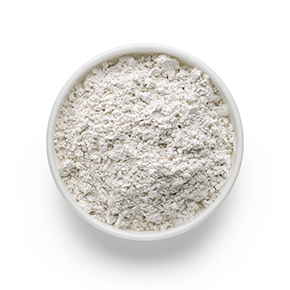Coral Calcium Powder is often referred to as Calcium Coral because it contains at least 35% calcium carbonate. In addition to its large ratio of calcium, Coral Calcium Powder also contains 72 other major and trace minerals. Many of the minerals that are contained in Coral Calcium operate synergistically with each other in a natural balance that cannot be replicated within man-made formulations.
Coral Calcium Powder has been used for nearly 2,000 years and has recently been recognized for its ability to contribute to strong teeth and healthy skin, hair and nails. Add calcium coral to any formulation in which a high mineral content is desirable such as scrubs, body polishes, massage butters, masks, facials, wraps, mineral makeup, lotions, dental powders, polishes and other formulations.
FNWL supplies only pure fossilized above sea Coral Calcium Powder. Fossilized Above Sea Coral Calcium Powder is carefully harvested from pure coral that has risen to above sea level. In contrast, marine coral is harvested from living coral reefs and the surrounding areas. Marine coral is inferior to fossilized above sea coral because it can contain impurities and other sea elements such as sea shells, rock and silica.
The origin of Coral Calcium Powder can also be important. FNWL sources its Coral Calcium from the Carribean Islands. Coral Calcium Powder originating from the Marshall Islands, for instance, may be contaminated by plutonium as a result of the nuclear testing performed in that area.
Below is an abbreviated list of 15 of the 73 minerals contained in Coral Calcium Powder.
Sources:
1. Natural Sourcing, LLC Certificate of Analysis
2. Bruce W. Halstead, M.D., Fossil Stony Coral Minerals and Their Nutritional Application (Cannon Beach, OR: Health Digest Publishing Company, 1999), pgs. 37-82.
- Boron
- Calcium
- Copper
- Fluoride
- Iodine
- Magnesium
- Molybdenum
- Phosphorus
- Rubidium
- Selenium
- Silicon
- Strontium
- Sulfur
- Vanadium
- Zinc
*Typical Shelf Life begins on the date of manufacture and is defined as the typical shelf life of an ingredient when it is stored and handled properly. The Typical Shelf Life is offered as a general guideline. It should not be considered to be an expiration date. Many ingredients are usable beyond the stated date, especially when stored and handled very carefully.







